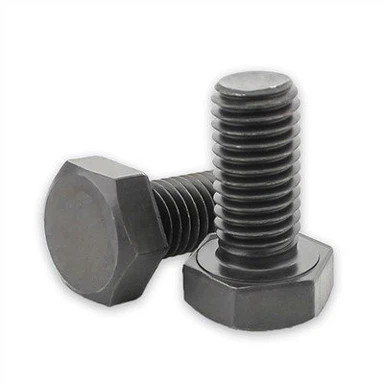Selection Of Bolts in Mechanical Design
Aug 15, 2024
The performance grades of bolts used for steel structure connections are divided into more than 10 levels, including 3.6, 4.6, 4.8, 5.6, 6.8, 8.8, 9.8, 10.9, 12.9, etc. The specific meaning of bolt grade is that for example, a bolt of grade 4.8, 4 represents tensile strength, and 0.8 represents the ratio of yield strength to tensile strength. That is, the tensile strength of a bolt of grade 4.8 is 400MPa, and its yield strength is 400x0.8=320MPa. Similarly, other bolt grades also have the same meaning.
High strength bolts and ordinary bolts
High strength bolts can also be considered as imported words. The English translation should be high-strength friction pre tightened bolts, omitting the four words friction pre tightened. This omission is not important and has caused great confusion for many beginners. From the grade of bolts, it can be seen that the indicator for measuring bolt performance is strength, whether it is tensile strength or yield strength, ultimately it is the allowable stress of the material. Some books say that bolts with a performance level greater than or equal to 8.8 are called high-strength bolts. But many ordinary bolts we usually see also come in grades 10.9 and 12.9, and their prices are the same as ordinary bolts. Let's not consider the performance level of high-strength bolts for now. We will only explain this issue from the point of stress
High strength bolts rely on clamping two parts and increasing the maximum static friction force through pre tightening force. For high-strength bolts, they are only under tension and not subjected to shear force. If two objects move relative to each other, it indicates a design failure and an unqualified design. This point is very important. It means that two parts are rigidly connected, just like welding. If they slide, it indicates welding failure, and the established mechanical calculation model is inaccurate. Rigidity indicates a rigid connection that can transmit torque. This is the key point for designers to design high-strength bolts, and it is also the essential difference between ordinary bolts and high-strength bolts.
And the 8.8 grade of ordinary bolts only represents high strength.
Ordinary bolts rely on their own strength to resist shear force. From a mechanical analysis perspective, ordinary bolts are hinges in mechanical calculations and can slide. To exaggerate, two objects can slide without tightening. The function of a bolt is simply to connect two objects, and the two objects can slide as long as the bolt cannot be pulled.
The difference between ordinary bolts and high-strength bolts lies in the strength of the materials used.







